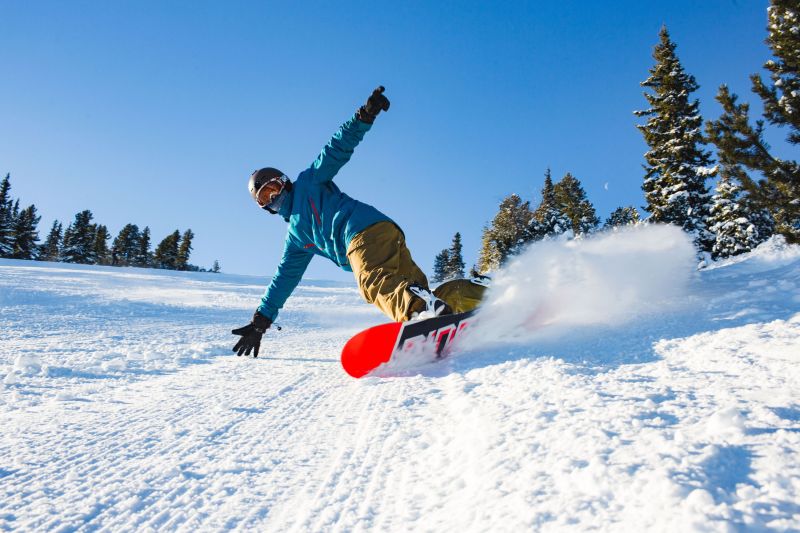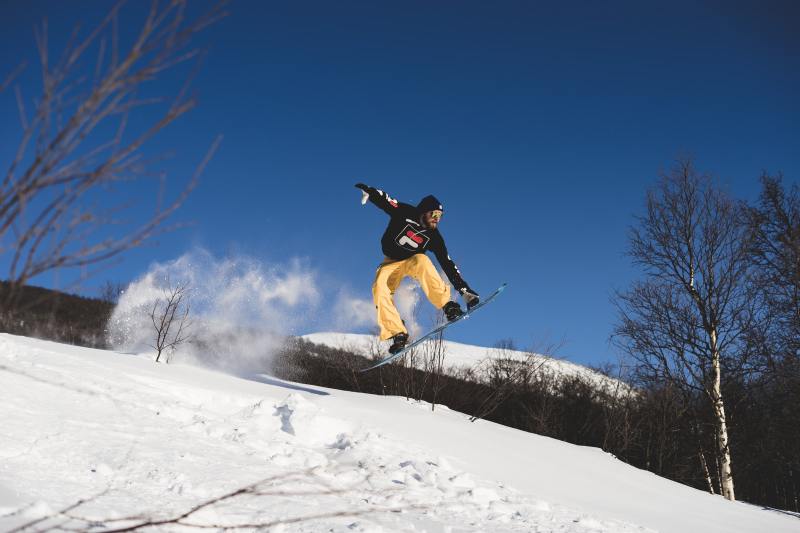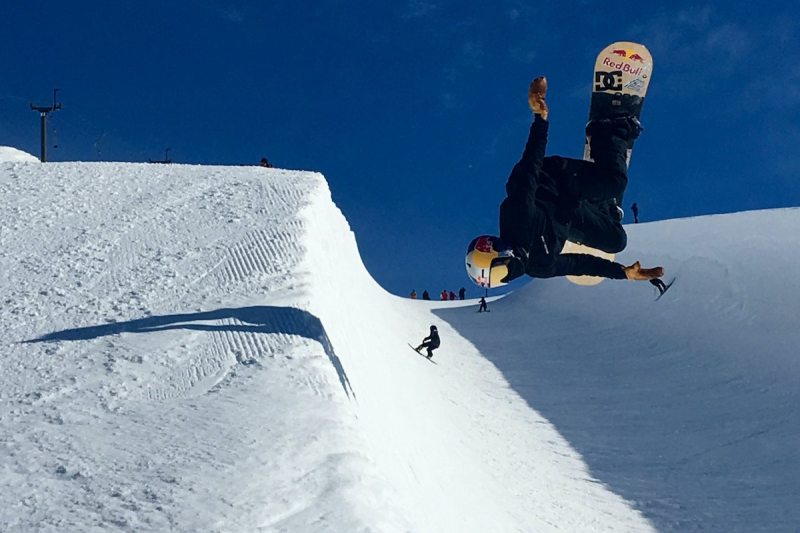
Along with snowboard length and style, one of the first things you’ll see when looking at a new board is the flex rating. A list of numbers is one thing, but what really matters is performance. Picking any kind of snowboard gear is a highly personal choice. Some snowboarders get on with the flex and bend of a softer board, while others enjoy the float and stability of a stiffer model when they’re snowboarding.
Once you’ve ridden enough boards, you’ll start to get a feel for what you prefer. With that in mind, we strongly recommend taking any and every opportunity that you get to test out or borrow boards. But while you’re finding a way to get your hands on every snowboard on the market, we’ve put together this snowboard flex rating guide so you can make the right decision on your next snowboard.

What do snowboard flex ratings mean?
Snowboards are generally rated out of 10 for flex — with 1 being the most flexible, and 10 the stiffest. Generally, these snowboard flexibility ratings fall into three categories.
- 1 – 3 — Soft flex. Flexible snowboards are best suited to tight turns and jibbing around on the mountain. Beginners can get to grips with low-speed turns and understand how a snowboard moves more easily on a flexible board, while advanced freestyle riders can pop and spin more easily.
- 4 – 7 — Mid flex. Most all-mountain snowboards have a medium flex, offering a balance that allows you to ride every style of snow. These vary from soft-mid to stiff-mid flex, but they are generally capable in every area, without necessarily excelling anywhere.
- 8 – 10 — Stiff. It can take some time to get used to a stiffer snowboard, but for snowboarders with certain styles, they’re exactly what you need. At high speed, stiff snowboards don’t have the same chatter and instability as a flexible board, making them popular with racers and carvers. They also float better on steep powder runs, so they’re great on the deep stuff — unless you’re in tight trees, that is.

Longitudinal vs. torsional flex
The majority of the flex that is spoken about when it comes to snowboards is longitudinal flex — this is the flex from the front to the back of the board. This can either be progressive or continuous. Continuous flex is uniform throughout the board, while a progressive flex will differ between the center of the board and the tip and tail. This could either be a stiffer center with softer ends, or, more commonly, a stiff tail and softer front end for increased pop and float on all-mountain boards.
Torsional flex is not talked about as much. This is the flex that a snowboard has across the center, and it’s generally understood to have less effect on how a board performs. That said, a board with a higher torsional flex can be easier for beginners who can feel that their feet have different roles on the snowboard, and for those who want to perform tight turns or quick tricks. Like longitudinal flex, torsionally stiffer boards are more stable at high speed and float better in powder.

Which flex rating is best for beginners?
While the optimal snowboard flex rating has a lot to do with the type of riding you plan on doing, a good rule of thumb for beginning snowboarders is to avoid stiffer boards. A board with a flex rating between 7 and 10 will give you a very stable ride at high speeds or in icy conditions, but they require solid technique, which is why beginners should stay away from them. Boards that are more flexible are more forgiving for beginners, though the tradeoff is that they are not as good for high speeds or icy conditions.
If you’re looking for speed, or plan on riding in icy or uneven conditions, look for a snowboard with a flex rating somewhere in the middle. The board will still have enough flex to be forgiving and turn easily, but it will give you stability at higher speeds that a more flexible board can’t.
Editors' Recommendations
- These 3 brands of ski or snowboard wax are the only ones we recommend: Here’s why
- Cross-country skiing, ice fishing, and more: 6 unique winter activities you simply have to try
- Snowboard bindings gift guide: Our top picks from Burton, Union, Nidecker, and more
- Après ski is cool, but the Swedish tradition of fika might be cooler: Here’s why
- The ultimate ski gift guide for anyone who loves powder days





